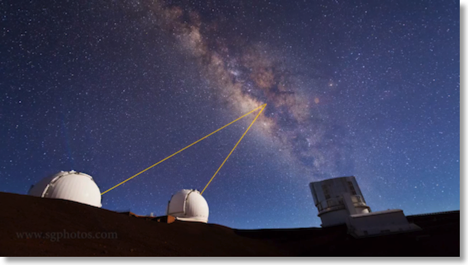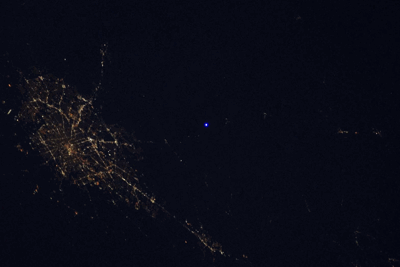Home
A comprehensive resource for safe and responsible laser use
UK: "Call for evidence" response summarizes many groups' views on laser eye, plane incidents; sets forth actions
The U.K. government published on January 8 2018 a 14-page report on laser pointer safety and potential regulation. The report includes two new actions the government will take to reduce the number and risk of unsafe laser pointers:
1) “strengthening safeguards to stop high-powered lasers entering the country”, and
2) “working with manufacturers and retailers to [voluntarily] improve labeling.
Separately, the U.K. government published the Laser Misuse (Vehicles) Bill on December 20 2017. This makes it illegal to point a laser at vehicles, with a prison term of up to five years and an unlimited fine.
“Laser pointers: call for evidence - government response”
From August 12 to October 6 2017, the Department for Business, Energy and Industrial Strategy opened a “Call for Evidence” consultation. BEIS set forth 19 questions, asking the public to give their views on laser pointer hazards and what actions to take.
The January 8 2018 government response summarizes the 265 responses received.
The report is especially useful because it incorporates the views of many disparate groups: pilots (64% of respondents), “concerned members of the public” (14%), professional laser safety advisors (9%), users of laser pointers (6%), ophthalmologists (6%), and Trading Standards authorities (2%).
The report then distills these views, finding surprising commonality. It is a good overview for the non-expert on two topics:
1) Actual laser pointer hazards — separating fact from fear
2) Potential actions to reduce the number and severity of laser pointer injuries and incidents — including what actions may not work (e.g., licensing).
We have summarized the findings below (click the “read more” link). However, reading the complete document is well worth the time of anyone interested in this issue.
Click to read more...
US: Time-lapse video shows astronomy lasers being used at Mauna Kea
Sean Goebel, a graduate student in astrophysics, has produced a 3-minute time-lapse video showing observatories at Mauna Kea, Hawaii, shooting lasers into the night sky. By analyzing how the beam is distorted by the atmosphere, a telescope’s mirror can be counter-distorted in order to obtain sharper images for astronomers.

A still frame from the video. Two telescopes are simultaneously observing the same spot in the Milky Way, using lasers to help give a sharper image.
Goebel writes about the lasers:
“A typical laser pointer that you might use to point at stuff/exercise your cat is about 5 mW. That's five one-thousandths of a watt. Not a whole lot of power. And yet it's enough to blind airplane pilots. The lasers on the telescopes are in the range of 15-40 watts. The FAA calls a no-fly zone over the area when a laser is in use, and two people have to stand around outside in the freezing temperatures and watch for airplanes. Each of them has a kill switch to turn off the laser in case an airplane comes near.”
“Additionally, the telescope has to send its target list to Space Command ahead of time. Space Command then tells them not to use the laser at specific times, ostensibly to avoid blinding spy satellites. However, you could calculate the spy satellite orbits if you knew where they were at specific times, so Space Command also tells the telescope to not use the laser at random times when no satellites are overhead.”
To clarify, the FAA does not have a no-fly zone, but instead issues a “Notice to Airmen” or NOTAM about the laser operations. It is not illegal to fly over the area. Fortunately, at Mauna Kea’s location and altitude only a couple of flights per month fly at night within the laser-affected airspace over the mountain. At one telescope, planes get close enough to the beam to cause a shutoff once every year or twin.
Automated aircraft-detection systems are slowly being tested and phased in, since the cost of having humans watch the skies all night at Mauna Kea’s altitude (13,700 feet) is about $600,000 per year.
The video, “Mauna Kea Heavens”, can be seen at Sean Goebel’s website, which also has more information about adaptive optics lasers and how the video was made. Additional information on aircraft frequency and spotting techniques is courtesy Paul Stomski of the Keck Observatory. A story about Keck’s aircraft protection system appears online in Ascend magazine.
US: Amateur astronomers illuminate International Space Station with spotlights and 1-watt laser

Two-frame animated GIF showing bright and dim light from the Lozano Observatory (center) near the city of San Antonio (left). North is to the right in this photo from the International Space Station, taken by astronaut Don Pettit. Click on photo for a larger version.
The spotlights were flashed at the ISS by holding plywood sheets in front of the lights every two seconds. This procedure can be seen in the video below.
The animated GIF above shows a bright blue light alternating with a dim light. The bright light is almost certainly from the spotlights. The bluish tint may be an artifact of oversaturating the camera’s sensor. Astronaut Don Pettit reported that the bright light appeared white, and the dim light appeared blue. He wrote “We could only see the laser when the white light was off and not all the time.” (E.g., the white spotlights overpowered the blue laser.) He added, “It was like there were tracking issues with the laser to keep it on target.”
The dim light in the animated GIF may be the laser only, or it may be light from the spotlights that wasn’t fully blocked by the plywood sheets. The astronomers will be working with Pettit, trying to pin down exactly how visible the laser light was.
Canada: Calgary astronomers agree with $5000 fine
Saulnier told police he had the pointer because he was an amateur astronomer. The Calgary representatives of the RASC said Saulnier was “not an RASC member, nor [was he] known to us.” They pointed out that responsible amateur astronomers would use lasers only on astronomical targets on clear nights when others are present: “There is no legitimate solo use of pointing a laser pointer into the sky that we can think of.”
From the Calgary Herald